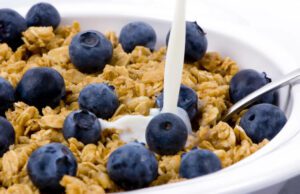The Importance of Dietary Fiber
 The benefits of fiber in your diet go beyond regularity. A high-fiber diet is shown to lower your risk of diabetes and heart disease, according to the Mayo Clinic. Additionally, people who consume more often have greater success while dieting because their food digests more slowly, and therefore keeps them fuller longer. Nevertheless, most Americans do not consume the recommended daily intake of dietary fiber, reports the University of Maryland Medical Center.
The benefits of fiber in your diet go beyond regularity. A high-fiber diet is shown to lower your risk of diabetes and heart disease, according to the Mayo Clinic. Additionally, people who consume more often have greater success while dieting because their food digests more slowly, and therefore keeps them fuller longer. Nevertheless, most Americans do not consume the recommended daily intake of dietary fiber, reports the University of Maryland Medical Center.
What is Dietary Fiber?
Dietary fiber, also called roughage, is derived from plant foods that your body cannot absorb or digest as it does fats and carbohydrates. When you consume insoluble fiber, your body uses it to increase the bulk of your stool. This is beneficial for normalizing bowel movements. Soluble fiber helps lower blood glucose levels by slowing the absorption of sugar. Soluble fiber also helps lower blood cholesterol levels by reducing LDL or “bad” cholesterol in the body. Some studies show that maintaining this type of diet also helps reduce blood pressure and inflammation. Foods that contain these types of fiber include:
- Fruits and vegetables
- Wheat bran
- Whole-wheat flour
- Nuts
- Flaxseed
- Beans
Recommended Intake of Fiber
With so many people eating on the go, many lack the dietary fiber doctors recommend. Pre-packaged foods are not ideal sources of fiber. Nor other needed nutrients. However, when you are unable to eat fresh selections, you can choose better options by reading nutrition labels. A good rule of thumb when looking for the foods that are highest is to aim for items containing at least one gram of fiber per 100 calories. Your day’s intake should total approximately 21 to 25 grams if you are a woman. Men need approximately 30 to 38 grams of protein daily for optimal health. If consuming enough of it is difficult for you, consider using healthful supplements and aides such as:
- Nature’s Three
- LoClo
- Everybody’s Fiber
You can also learn more about healthy fats and healthy eating.
Yeferences: MayoClinic.com: http://www.mayoclinic.com/health/fiber/NU00033;







